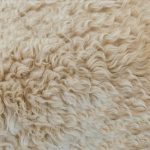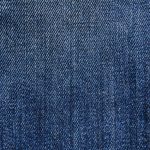Looking to add a touch of elegance to your ceiling lights without breaking the bank? Look no further!
In this guide, you'll discover 5 budget-friendly fabric options for DIY ceiling light covers that are as versatile as a Swiss army knife.
From the timeless charm of linen to the crisp simplicity of cotton, and the rustic allure of burlap to the delicate beauty of tulle and muslin, these fabrics offer endless possibilities for creating custom light covers that suit your style and budget.
Whether you're a seasoned DIY pro or just starting out, these fabric options will empower you to elevate your space with personalized, budget-friendly ceiling light covers.
Let's get started!
Key Takeaways
- Linen and cotton are cost-effective options that offer versatility and elegance to DIY ceiling light covers.
- Burlap is a rustic and budget-friendly choice that adds depth and character to light covers.
- Tulle adds elegance and whimsy, creating a soft and dreamy ambiance.
- Muslin is an affordable and versatile fabric option that provides a soft and gentle diffusion of light.
Linen
For a cost-effective and stylish option, you can use linen to create a DIY ceiling light cover. Linen offers a beautiful texture that adds a touch of elegance to your lighting design. When embarking on DIY projects, it's important to consider the material's versatility, and linen provides just that. Its natural, earthy texture can complement a range of interior styles, from rustic to modern, making it a popular choice for those looking to elevate their home lighting.
In addition to its texture, linen also comes in a variety of color options, allowing you to customize your ceiling light cover to suit your specific design preferences. Whether you prefer a neutral tone to blend seamlessly with your existing decor or a bolder color to make a statement, linen can cater to your needs. This flexibility makes it an ideal choice for DIY enthusiasts who want to personalize their lighting fixtures.
When it comes to lighting design, the use of linen can create a soft, diffused glow, perfect for adding a warm and inviting ambiance to any room. Whether you're aiming for a cozy atmosphere in your living space or a serene mood in your bedroom, linen ceiling light covers can help you achieve your desired lighting effects.
Cotton
You can also consider cotton as a versatile and affordable option for creating DIY ceiling light covers. Cotton fabric is known for its softness, breathability, and ease of maintenance, making it an excellent choice for light covers. When choosing cotton fabric for your DIY project, it's important to consider its properties and patterns to ensure the best results.
| Cotton Fabric Properties | Cotton Fabric Patterns |
|---|---|
| Natural fiber, breathable, easy to clean | Solid colors, stripes, floral prints, geometric designs |
Cotton fabric properties make it a practical choice for ceiling light covers. Its natural fiber composition allows air to flow through, preventing heat buildup while providing a soft and comforting glow. Additionally, cotton is easy to clean, making maintenance hassle-free. When it comes to patterns, cotton offers a wide range of options including solid colors, stripes, floral prints, and geometric designs. These patterns can add a touch of style and personality to your DIY ceiling light covers, allowing you to personalize the lighting in your space. Consider these properties and patterns when selecting cotton fabric for your DIY ceiling light covers to achieve both functionality and aesthetic appeal.
Burlap
Consider using some burlap for your DIY ceiling light covers as a cost-effective and rustic option. Burlap's coarse texture and earthy tones make it a perfect fit for creating a cozy and inviting atmosphere in your space. Its natural, rustic look adds a touch of warmth and charm to any room, making it an ideal choice for those seeking a more traditional or farmhouse-inspired decor.
Burlap's rough texture adds depth and character to your ceiling light covers, creating a visually appealing focal point in the room. Its versatility allows you to play with different design elements, such as layering, pleating, or adding embellishments, to achieve a customized look that complements your overall aesthetic.
In addition to its aesthetic appeal, burlap is also a budget-friendly option, making it an excellent choice for DIY projects. Its durability ensures that your ceiling light covers will last, and its low cost allows you to stay within your budget while achieving a stylish and on-trend decor.
Incorporating burlap into your DIY ceiling light covers is a great way to infuse a touch of rustic charm and warmth into your space without breaking the bank.
Tulle
Using tulle for your DIY ceiling light covers can add a touch of elegance and whimsy to your space. Tulle, with its delicate and sheer appearance, can create a soft and dreamy ambiance when used as a fabric for ceiling light covers. When it comes to tulle design, consider layering different colors for a more dynamic look or adding embellishments like beads or sequins for a touch of glamour. You can also experiment with pleating or gathering the tulle to create texture and visual interest.
For tulle installation, start by measuring and cutting the tulle to the appropriate size for your light cover. Then, carefully drape the tulle over the frame, ensuring it's taut and free of wrinkles. Secure the tulle in place using small clips or adhesive, making sure the fabric is evenly distributed. Once the tulle is in position, trim any excess fabric for a clean finish.
With its versatility and affordability, tulle opens up a world of creative possibilities for your DIY ceiling light covers.
Muslin
When creating DIY ceiling light covers, explore muslin as an affordable and versatile fabric option. Muslin is an excellent choice for light diffusion and can be used to create decorative prints for your ceiling light covers. It offers a balanced combination of light transmission and diffusion, making it ideal for achieving a soft and ambient lighting effect in any room.
To help you understand the benefits of using muslin for your DIY ceiling light covers, here's a quick comparison table:
| Criteria | Muslin |
|---|---|
| Light Diffusion | Provides a soft and gentle diffusion of light for a cozy ambiance |
| Versatility | Ideal for creating decorative prints and patterns |
| Affordability | Cost-effective option for DIY projects |
Muslin fabric's ability to diffuse light evenly throughout the room makes it a popular choice for DIY ceiling light covers. Its versatility allows you to explore various decorative prints and patterns, giving you the flexibility to customize the covers to match your interior decor. Additionally, its affordability makes muslin a practical and budget-friendly option for your DIY projects.
Frequently Asked Questions
Are There Any Specific Safety Considerations to Keep in Mind When Using These Fabric Options for DIY Ceiling Light Covers?
When creating DIY ceiling light covers using fabric, ensure safety precautions are followed. Secure the fabric tightly to prevent fire hazards. Use heat-resistant materials and avoid placing fabric too close to the light source. Master your DIY techniques for a safe outcome.
What Are the Best Methods for Cleaning and Maintaining These Fabric Options Once They Are Installed as Ceiling Light Covers?
To maintain fabric options for ceiling light covers, clean regularly with a gentle vacuum or damp cloth. Consider fabric customization for easy removal. Check for fire safety concerns and ensure long-term maintenance by replacing fabric if worn.
Can These Fabric Options Be Easily Customized or Dyed to Match a Specific Color Scheme or Design Aesthetic?
You can easily customize these fabric options to match your color scheme or design aesthetic. Dyeing techniques work well to achieve the desired look. Customization options allow you to create unique and personalized ceiling light covers.
Are There Any Potential Fire Hazards to Be Aware of When Using These Fabric Options as Ceiling Light Covers?
When using fabric options for DIY ceiling light covers, ensure fire safety by choosing fire-resistant materials. Check fabric durability to prevent potential hazards. It's important to prioritize safety and longevity when selecting materials for your DIY project.
How Can These Fabric Options Be Effectively Secured or Attached to the Ceiling Light Fixture for a Professional and Secure Installation?
To secure the fabric options effectively, consider using adhesive hooks or clips for a professional installation. Ensure the fabric is taut and evenly distributed for a secure fit. Follow manufacturer's instructions for installation tips to achieve a polished look.
- The History and Evolution of Chamois Fabric - June 22, 2025
- Chamois Fabric on Wikipedia: What You Need to Know - June 22, 2025
- How to Pronounce Chamois Fabric Correctly - June 22, 2025






